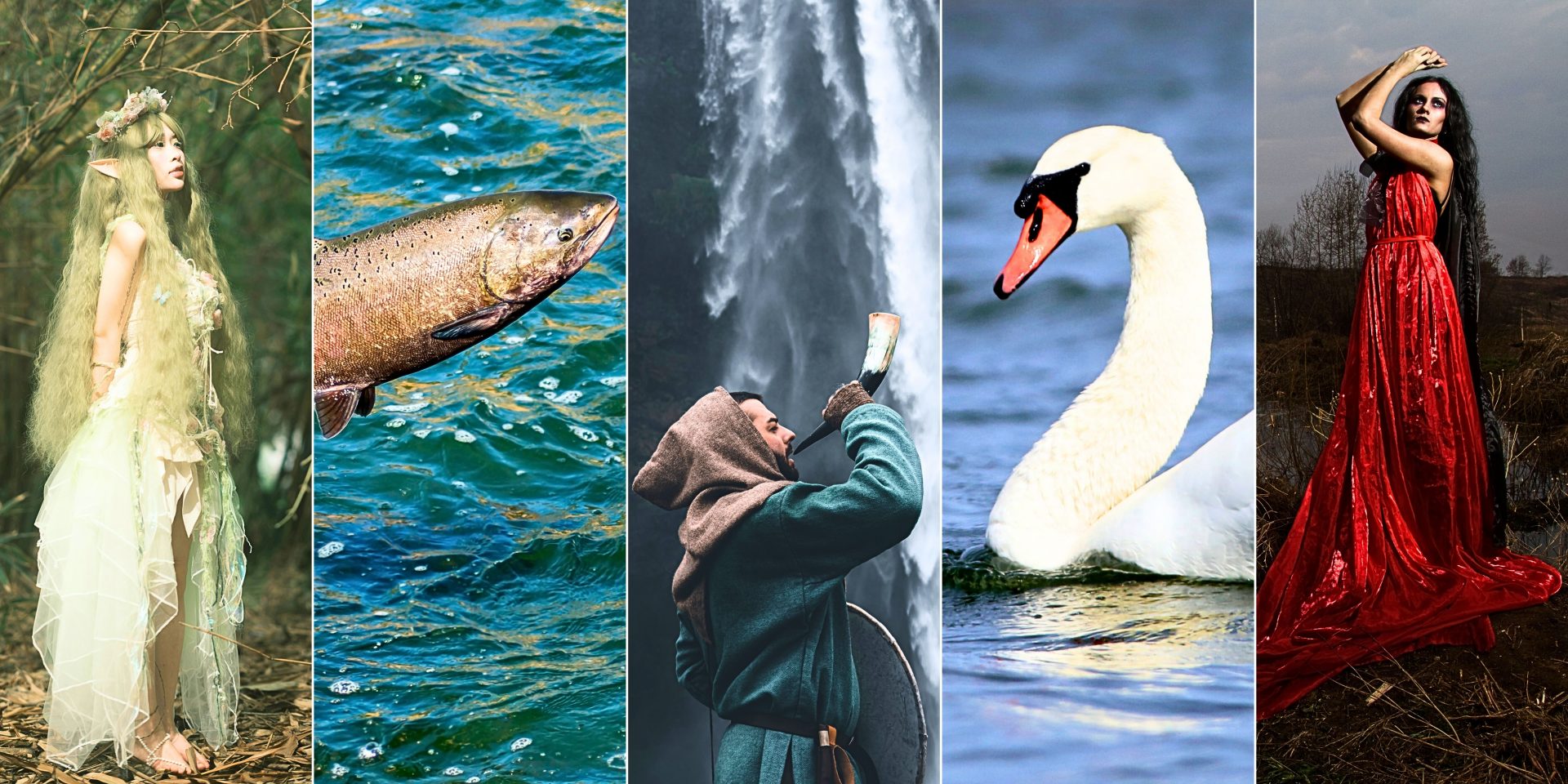



If you hear a chilling wail at night… don’t say we didn’t warn you! It’s believed that each Irish family has its own personal banshee. Legend says the cry of a Banshee, or Bean Sidhe, warns you before the death of a loved one. Described as a pale woman with long, silver hair, she stereotypically appears brushing her hair, dressed in all white or grey. The banshee is said to be hauntingly beautiful, with a ghostly appearance. Remember, she is supposedly an omen of death, not a cause of it.
Cú Chulainn is arguable Ireland’s most famous hero. He is known as a fierce warrior and demigod with superhuman strength. As a boy, Cú Chulainn earned his name by slaying a ferocious guard dog with his bare hands and offering to take its place until a replacement was trained.
Cú Chulainn went on to become a legendary figure in the Ulster Cycle, defending his homeland and fighting impossible battles – with a winning streak of course! He is sometimes referred to as “the Irish Achilles” for his choice of a short but impressive life.
Long before brain-boosting smoothies, Ireland had its own superfood — the legendary Salmon of Knowledge! The story centres around a magical salmon that lives in the River Boyne. According to myth, the first person to eat this wise old fish would gain all the knowledge in the world.
The story goes that young Fionn Mac Cumhaill accidentally tasted the salmon while cooking it for Finnegas, a poet who had spent years trying to catch it. Fionn accidentally burns his thumb while cooking the fish, and puts it in his mouth to soothe the pain, inadvertently tasting the salmon. This singular taste was enough to transform Fionn into one of Ireland’s greatest heroes. Talk about a happy accident!
The Children of Lir is one of Ireland’s most heart-breaking legends. According to legend, a jealous stepmother turned her children into swans. With their human minds intact, they were cursed to wander the lakes and seas of Ireland for 900 years. The spell was finally broken with the arrival of Christianity to Ireland.
You can still visit Lake Derravaragh in Co. Westmeath — said to be one of their first homes after the transformation. Today, swans in Ireland are seen as lost souls, and harming them is said to bring bad luck.
In Ireland, fairies aren’t all glitter and wings — the Sidhe (pronounced shee) are powerful, unpredictable, and often best left alone. They’re said to live in ancient ring forts, hills, and sacred sites across Ireland. Even just lone trees, especially hawthorns, are seen as portals to the ‘Otherworld.’ May Day (1st) is considered a particularly active time for the Sidhe. Locals will still tell you: never disturb a fairy tree or a fairy fort — unless you want a lifetime of bad luck.
Even modern road projects have been diverted to avoid them. Too extreme? We’ll let you decide…
Ireland’s mythology forms a significant part of Ireland’s cultural identity. It continues to inspire art and literature every day. Whether you’re wandering castle ruins, driving past misty lakes, or strolling through fairy forests, you’ll feel it: the sense that something ancient, something magical, is lingering.